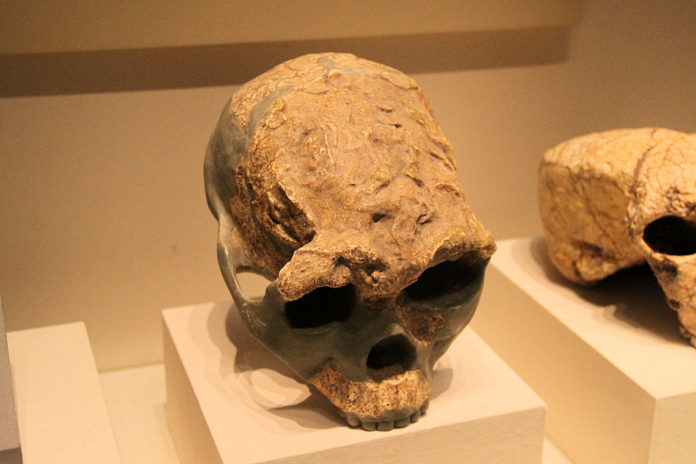Human prehistory is the story of humans before the written record. The story mostly comes from archaeological research – the study of fossils. However, the study of languages or DNA also plays key role in prehistoric study. Prehistory begins during the Stone Age. This was when early humans began to use tools. It ends about 5,000 years ago when writing was developed.
Stone Age
The Stone Age is the period in human prehistory when humans first began to use stone tools. The Stone Age is usually broken down into three periods: the Paleolithic, Mesolithic, and Neolithic periods.
Paleolithic (Old Stone Age)
The Paleolithic period began about 3.4 million years ago. Archaeological findings suggest that Australopithecus used stone tools in Africa. Australopithecus is an early ancestor of modern humans. The evidence indicates that 2.7 million years ago, our ancestors were making simple stone tools. The tools were made by chipping off flakes from materials that could hold a sharp edge. Common materials used were flint, obsidian, or quartz. These early ancestors were tool-using nomadic hunter-gatherers.
Various Homo species (human ancestors) lived during this period. Homo erectus began to migrate out of Africa to Europe and Asia about 2 million years ago. This implies that there is a “single origin” rather than “multiple origins” of the Homo species. And the evidence that Africa was the origin of humans.
Neanderthal man (Homo neanderthalensis) lived in Europe and Asia 200,000 years ago. The Neanderthals used tools, knew about fire, and buried their dead.
Modern humans (Homo sapiens sapiens) first appear in Africa about 300,000 years ago. Evidence suggests that Homo sapiens migrated out of Africa about 70,000 years ago and gradually replaced the earlier Homo species.
Mesolithic (Middle Stone Age)
The Mesolithic period begins about 15,000 to 20,000 years ago. This period is a transitional period from a hunting and gathering way of life to a more agricultural one. The domestication of animals begins during this period. Humans have learned to manage their food supply. Tools also become more complex than during the Paleolithic.
Neolithic (New Stone Age)
The New Stone Age starts about 12,000 years ago. During this period humans became truly agricultural. Animal domestication now includes large animals such as cows, sheep, goats, and pigs. Humans become more sedentary with permanent homes rather than temporary shelters. Larger and more complex human settlements appear in Europe, Asia, and the Americas.
This Neolithic Revolution began in the Fertile Crescent 12,000 years ago. It marks the transition to the cultivation of plants, domestication of animals, and permanent settlements. This Revolution laid the foundation for the rise of modern civilizations.
Reflections
Vocabulary
- Paleolithic
- Mesolithic
- Neolithic
Notes
- The Paleolithic began 3.4 million years ago when human ancestors began to use simple tools.
- During the Mesolithic humans learned to domesticate animals.
- 12,000 years ago, the Neolithic Revolution marks the shift from nomadic to more sedentary living.
Bibliography
Prehistoric Timeline, Oxford Reference.

